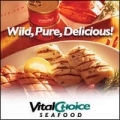 Print This Post
Print This Post
On The Importance Of Inter-Species Relationships
Written by Wellness Club on August 19, 2011 – 5:46 pm -Ha! Made you look! You just had to see what could have such a high-falutin’ title, right?
Is there anything more cute than either kids or pets? How about kids and pets together!
This collection was forwarded to us by a one of our readers…
Enjoy!















Related Posts
 Print This Post
Print This Post

Posted in Funnies | Comments Off





































